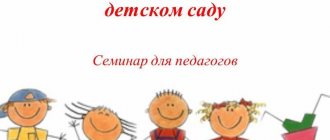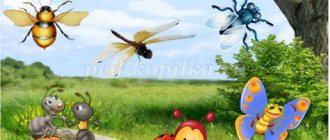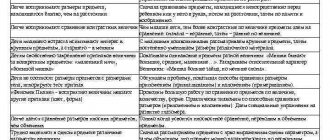Problem-based learning in preschool educational institutions
People who have learned to observe and experiment acquire the ability to pose questions themselves and receive factual answers to them, finding themselves at a higher mental and moral level in comparison with those who have not undergone such schooling.
K. E. Timiryazev
Just a decade ago, the main task of a teacher in a preschool educational institution was the direct transfer of ready-made knowledge from the teacher to the students. Modern society sets a radically different goal, which is noted in the Federal State Educational Standard, namely, now it is important not so much to familiarize children with a specific amount of educational information, but to develop children’s ability to independently “obtain”, sort knowledge, learn to make decisions, look for ways to solve problems, and show initiative , summarize information, draw conclusions.
In addition, curiosity is a natural need of preschoolers. Literally from birth, the baby learns about the world around him through the visual-tactile method, exploring the objects available to him. Growing up, the range of such accessible subjects and forms of their study becomes wider. But the essence remains the same - the child, through trial and error, comes to the conclusion about what shape, color, texture, etc. the object he is studying has. It is important for adults to reinforce the child’s natural desire to independently explore the world, not stopping the child’s attempts, but pedagogically soundly guiding the preschooler’s activities.
From the history of problem-based learning
With changes in society, there is a need to reform the process of training the younger generation. The emergence of such an innovative trend in preschool pedagogy as problem-based learning is associated with the ideas of the American educator and psychologist J. Dewey. The author developed an entire education system, which was later called “learning by doing.” The teacher organized an experimental school in which the main principle was to gain knowledge through independent research work of children. J. Dew noted that for versatile intellectual development, only the natural cognitive activity and innate curiosity of the baby is sufficient. Such radical ideas did not take root at that time and were subject to criticism.
In our country, the emergence of problem-based learning began only in the 60s of the twentieth century, which is associated with social and historical changes in society. Innovative teachers put forward ideas about the leading role of the student in the learning process and the importance of independent work. The role of the educator has also changed radically: from a person who provides ready-made knowledge to a senior adviser who will help and guide the activities of the children. Thus, the following teachers and psychologists were involved in the development of problem-based learning: V. F. Aitov, Yu. K. Babansky, M. A. Danilov, E. V. Kovalevskaya, I. Ya. Lerner, A. M. Matyushkin, M. I Makhmutov, N. A. Menchinskaya, M. N. Skatkin, A. V. Khutorskoy and others.
What is “problem-based learning”?
According to psychologist M.I. Makhmutov, problem-based learning is “...a learning process determined by a system of problem situations, which is based on a special type of interaction between teacher and students, characterized by systematic independent educational and cognitive activity of students to acquire new knowledge and methods of action by solving educational problems."
In other words, we can say that problem-based learning is the solution of cognitive tasks by children, when the role of the educator is to direct children to search independent activities.
The essence of problem-based learning is that the teacher creates a cognitive situation or task and provides students with the opportunity to independently find ways to solve it, using the existing amount of knowledge and skills. Thanks to such activities, children learn to activate their knowledge, think critically, and independently organize the learning process.
Thus, we can highlight the main goals of problem-based learning:
– meaningful assimilation by preschoolers of a system of knowledge and skills;
– development of independent cognitive activity;
– developing the ability for independent research.
Classification of problem situations
M. I. Makhmutov proposed the following classification of problem situations in the educational process:
- Lack of knowledge and skills available to the child to solve the task;
- The need to apply existing knowledge and skills in new conditions;
- The emergence of a contradiction between how a problem can be solved theoretically and the impossibility of implementing the chosen method in practice;
- The emergence of a contradiction between the achieved practical result and the lack of theoretical justification.
Stages of organizing problem-based learning
Problem-based learning consists of several stages, the main of which is the formation of a contradiction. It is the emergence of a contradiction in a problem situation that forces the child to intensify mental activity and encourages him to search for options for solving the problem. S. L. Rubinshtein o.
For example, if you ask a child of a younger group a question about why the clouds are floating in the sky, then a contradiction will arise between the preschooler’s existing knowledge (the child can associatively compare the movement of clouds with the movement of vehicles, the flight of birds and other knowledge already known to him) and what the child sees with my own eyes - the clouds really do move. A child of 3–4 years old cannot yet solve such a problem on his own, since he lacks knowledge about natural and physical phenomena. But the process of active mental activity has already started at this stage - the baby is trying to find an answer based on existing knowledge, offering the most unimaginable answer options.
The next stage is the formulation of a specific problem problem and the organization of the process of finding a solution. This component represents the two-way activity of the teacher and children. But still the leading role is given to the teacher. At this stage, it is important to correctly formulate a heuristic conversation with the kids, prepare visual material, thanks to which the children will be able to find the correct solution to the problem. In this case, you should draw the children’s attention to the fact that the clouds look like light fluff. To do this, you can demonstrate slides, videos, discussing what you saw. Thus, children, comparing the knowledge they have acquired with what they already have, come to the correct conclusion.
The last stage is to consolidate the new knowledge acquired. Here you can offer research or experimental work. For example, this: make “clouds” out of cotton wool; when the air stream of their hairdryer is directed at them, the children will see how they fly apart - this is confirmation that the clouds are floating due to the wind.
Diagram 1 clearly shows the stages of organizing problem-based learning:
Rice. 1. Stages of problem-based learning
Levels of problem-based learning
To effectively implement problem-based learning, preschool teachers need to gradually introduce this form of work. Preschoolers cannot suddenly become independent and solve impossible problems. Therefore, teachers and psychologists have developed levels of problem-based learning that should be overcome gradually, from simple to complex:
- level presupposes non-independent activity of preschoolers. At this stage, the teacher creates a problematic situation and presents facts. Children learn the material and then perform tasks according to the model, but with new, similar components of the task. For example, after explaining to children why clouds float, the question is asked about how the clouds “fly” or why a blizzard occurs (also because of the wind).
- level is the so-called semi-independent activity. Here, hypotheses for solving a problem situation are put forward by the students themselves based on existing knowledge. And they “come” to the only right decision together with the teacher. So, children independently look for the answer to the question of why clouds float, offering different versions. But the correct answer appears after the teacher’s leading questions or visual materials.
- level is independent. Pupils, without the help of a teacher, come to the correct solution to the problem.
- level - creative. At this stage, children can not only find a solution on their own, but also show creativity, additional solutions, and apply knowledge in non-standard situations.
How to create a problematic situation?
In order for problem-based learning to bring educational and educational benefits, it is recommended to adhere to the following rules for creating a problem situation:
- The “rule of the golden mean” refers to the level of difficulty of the task at hand. Thus, a problem that is too simple and easily solved does not activate critical thinking, cognitive and research activity of preschoolers. At the same time, an overwhelming task will reduce children’s interest in finding a solution and motivation for independent activity, and sometimes can lead to personal and psychological problems in students: lack of self-confidence, isolation, inability to defend their own point of view, etc.
- The solution to a problem situation must be accompanied by a specific, visual result, namely, children must master some program material. For example, in our example, children are introduced to the concept of wind as a natural phenomenon.
- Activation of the emotional sphere of a preschooler. Interest, surprise, excitement, and the joy of success significantly increase the pedagogical effect of “problem-based learning.”
Research work and experiment as an effective form of problem-based learning in preschool educational institutions
Effective and entertaining forms of problem-based learning for preschoolers are research and experimentation. Almost every day children face problematic situations both in preschool and at home. For example, you can organize research work with children 3–4 years old by analyzing winter patterns on the window. Instead of the usual simple explanation of the reasons for the occurrence of such a phenomenon, you can offer children a full-fledged research work using the following techniques:
- Heuristic conversation - based on the teacher’s leading questions, children independently come to the correct solution to the issue.
- Drawing up a description, story, fairy tale about the appearance of snow patterns on the windows. Here you can use both a visual illustration and a series of pictures.
- Didactic creative games “What do the patterns look like”, “Draw a pattern”, “Describe the patterns: what are they?”
Experimental work provides even more space for children's creativity and cognitive activity. With the help of various primitive experiments in the younger group of kindergarten, you can familiarize children, for example, with the properties of sand (wet, dry, loose, etc.), the weight of objects (heavy, light), plants (grow onions “on the windowsill”) and many other phenomena of the surrounding world. Such work can be used by the teacher as an element of a planned lesson, in the form of a pedagogical project (short-term or long-term), and also as an entertaining and educational event. For example, you can organize an adventure quest “Secrets and Riddles of Aunt Spring” for students in the junior group of a kindergarten, the content of which includes a variety of tasks to explain natural seasonal phenomena. Such work can be carried out within the framework of “Family Week” and invite not only pupils, but also their parents to take part in order to promote joint leisure time for children and adults and familiarize parents with the basics of such an innovative form of pedagogical work as problem-based learning.
Thus, problem-based learning is a current area of pedagogical discussion and discovery. To date, this form of work has not yet been scientifically formulated enough. But this does not prevent workers in the pedagogical sphere from implementing their creative developments in this area, showing initiative and creativity when developing innovative forms of work with preschoolers. It is important to remember that the cognitive activity and curiosity of children is inherent in nature and the teacher’s task is to develop these innate abilities of children, to activate the inclinations and creative potential of pupils, to encourage independence and initiative.
Technological map of activities for problem-based learning of preschoolers
A technological map is an algorithm for solving a problem situation.
It reflects the stages of actions, activities that are implemented by preschoolers and the teacher in the course of solving a problem situation.
The technological map includes the following stages of activity:
- Formulation of the problem. This is the very first and most difficult stage of the work. The teacher needs to explain to the children the essence of the problem, and for the children to comprehend this essence and realize the need to resolve the existing problem.
- Updating knowledge and skills. Children are reminded that they have certain knowledge and skills that will help them solve problems and become the basis of their activities.
- Formulation of hypotheses. At this stage, options for solving the problem are put forward. The teacher assists children in formulating these options.
- Testing hypotheses. Here, various types of children's activities are implemented, in which they check the correctness of the assumptions made. As a rule, different types of games are used, and experimental and research work is also carried out.
- Gaining new knowledge. In the course of activity, new knowledge is formed. The teacher helps children in their approval and introduction to practical activities.
According to this algorithm, learning becomes an independent search for knowledge by children. Children act as discoverers of knowledge.





